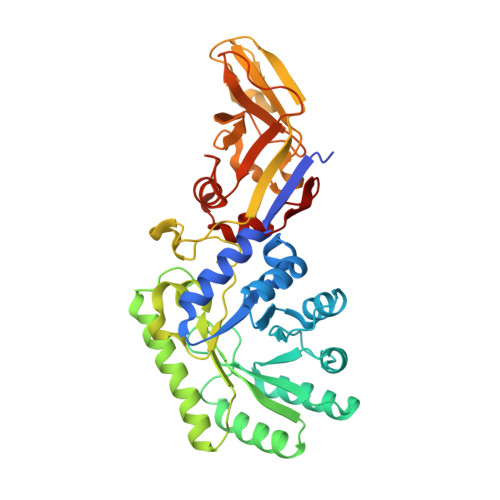D-Cycloserine destruction by alanine racemase and the limit of irreversible inhibition.
de Chiara, C., Homsak, M., Prosser, G.A., Douglas, H.L., Garza-Garcia, A., Kelly, G., Purkiss, A.G., Tate, E.W., de Carvalho, L.P.S.(2020) Nat Chem Biol 16: 686-694
- PubMed: 32203411
- DOI: https://doi.org/10.1038/s41589-020-0498-9
- Primary Citation of Related Structures:
6SCZ - PubMed Abstract:
The broad-spectrum antibiotic D-cycloserine (DCS) is a key component of regimens used to treat multi- and extensively drug-resistant tuberculosis. DCS, a structural analog of D-alanine, binds to and inactivates two essential enzymes involved in peptidoglycan biosynthesis, alanine racemase (Alr) and D-Ala:D-Ala ligase. Inactivation of Alr is thought to proceed via a mechanism-based irreversible route, forming an adduct with the pyridoxal 5'-phosphate cofactor, leading to bacterial death. Inconsistent with this hypothesis, Mycobacterium tuberculosis Alr activity can be detected after exposure to clinically relevant DCS concentrations. To address this paradox, we investigated the chemical mechanism of Alr inhibition by DCS. Inhibition of M. tuberculosis Alr and other Alrs is reversible, mechanistically revealed by a previously unidentified DCS-adduct hydrolysis. Dissociation and subsequent rearrangement to a stable substituted oxime explains Alr reactivation in the cellular milieu. This knowledge provides a novel route for discovery of improved Alr inhibitors against M. tuberculosis and other bacteria.
Organizational Affiliation:
Mycobacterial Metabolism and Antibiotic Research Laboratory, The Francis Crick Institute, London, UK.



























